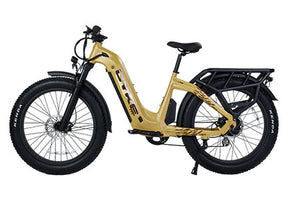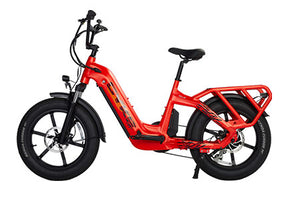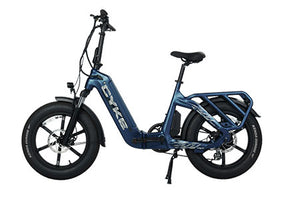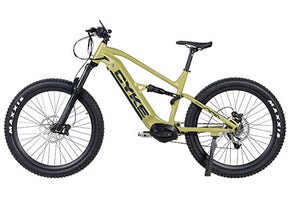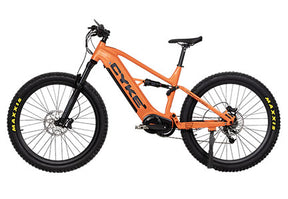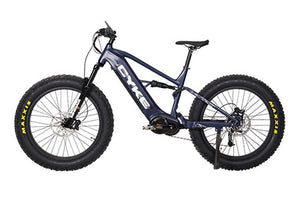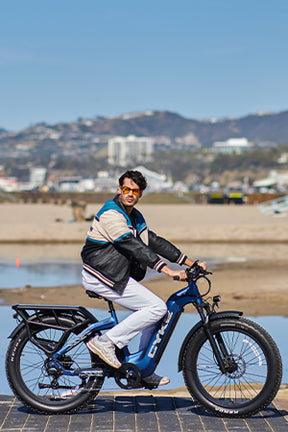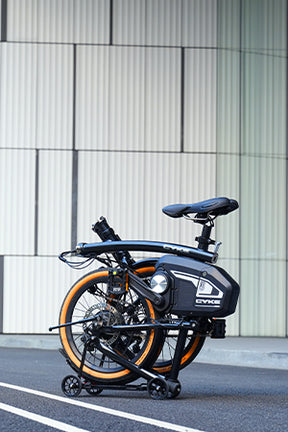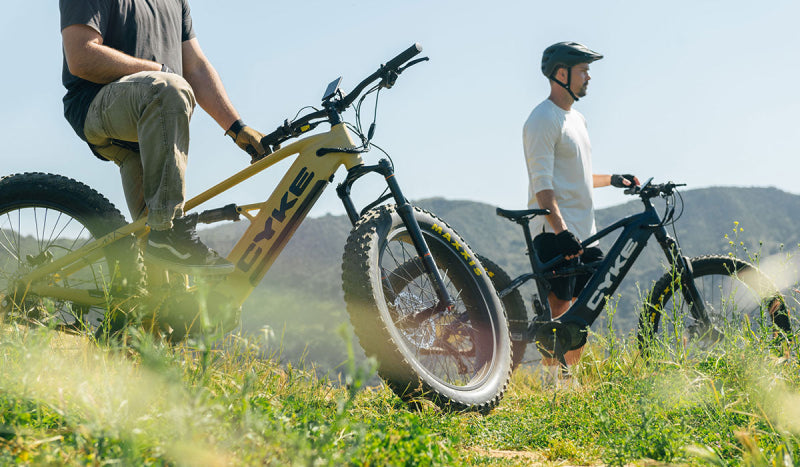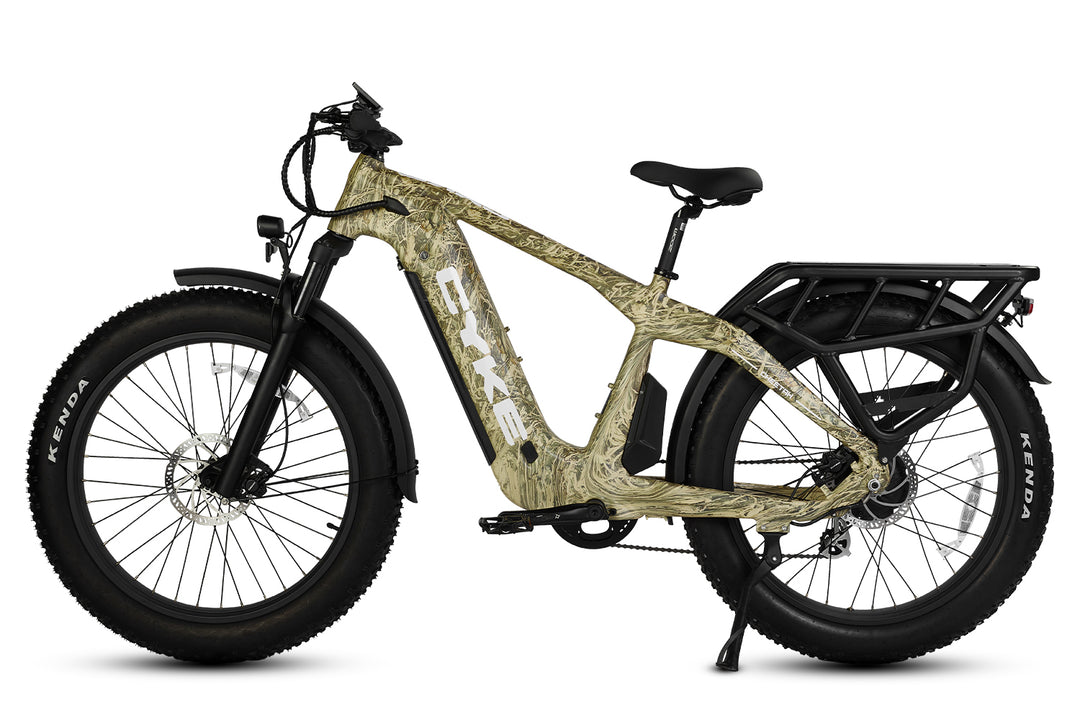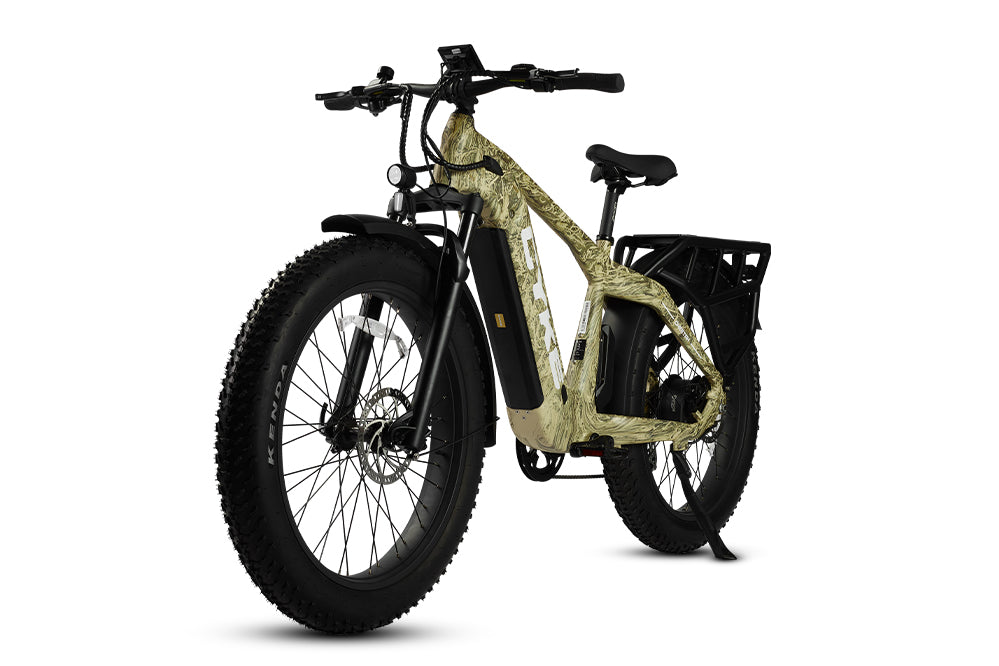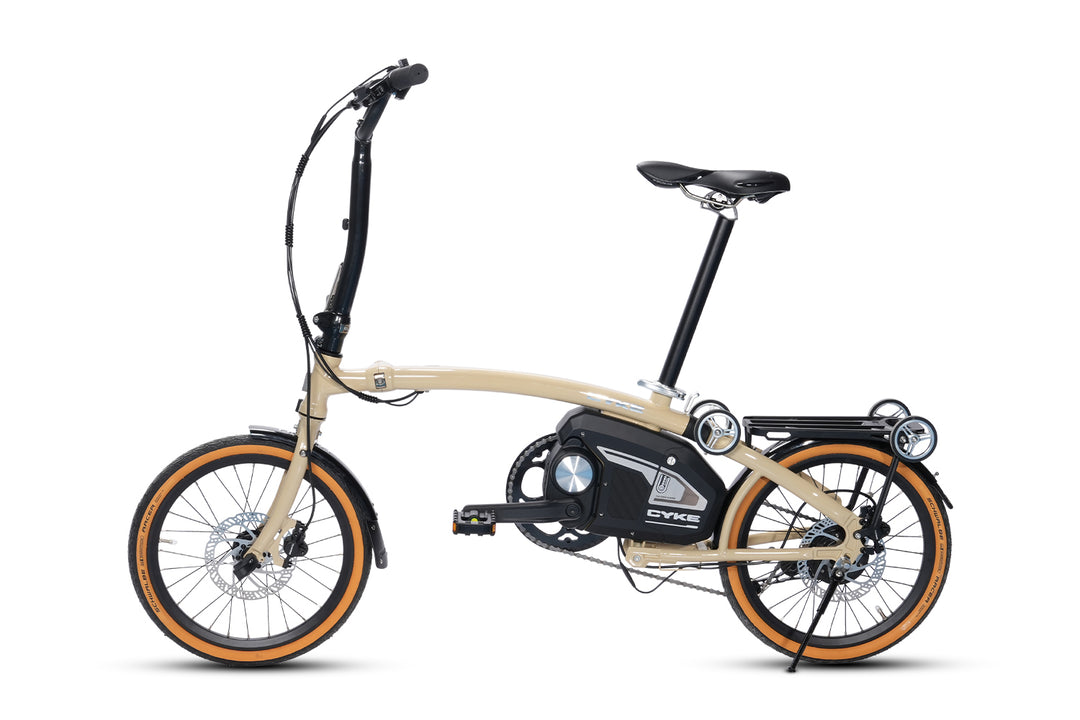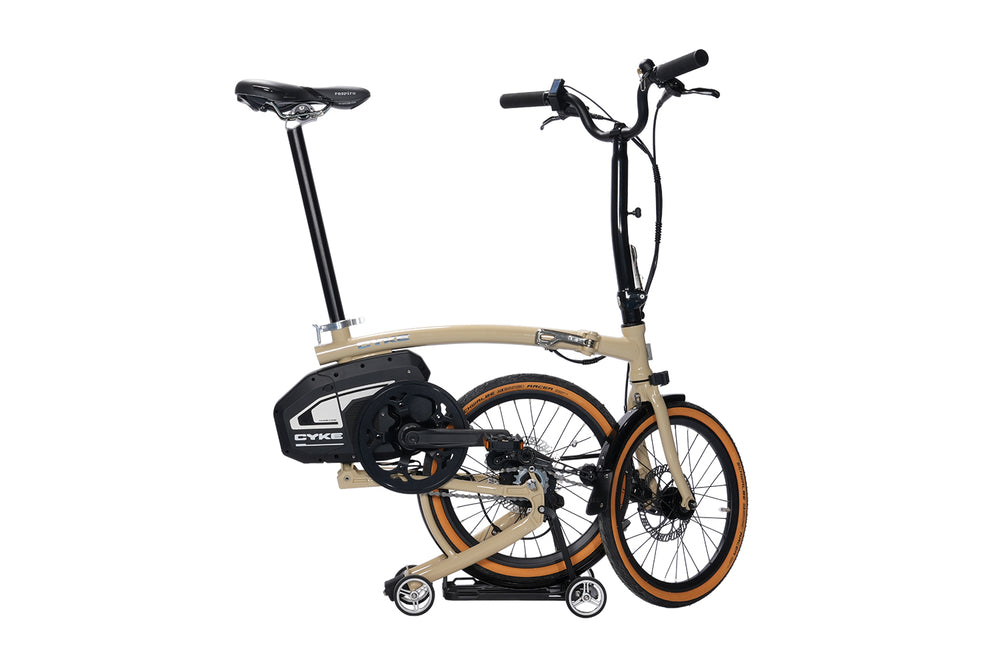E-Bike Tire Trends 2026: From Fat Tires to City Slicks
By 2026, tires will become a key factor in how riders choose their electric bikes. From wide, grippy tires that handle any terrain to slim, speedy options for city streets, the e-bike tire trends 2026 show us where the industry is heading.
This shift matters because tires directly affect how your e-bike rides, handles, and performs. Understanding these trends helps you pick the right setup for your needs.
Let's explore what's new and what's working in the e-bike tire world.
Fat Tire E-Bikes in 2026 — Power, Comfort, and U.S. Popularity
Why Fat Tire E-Bikes Dominate the 2026 Market
The e-bike tire trends 2026 data show that the fat tire electric bike market is projected to reach USD 4.5 billion by 2033, growing at a CAGR of 16.4% from 2026 to 2033.
That’s because fat e-bikes can do more than slim models. They can carry heavy loads or haul kids in sidecars, thanks to strong motors and wide tires.
Builders fit big batteries and powerful motors (750W or more) on these bikes, so they climb hills and go fast even under load.
At the same time, riders feel safer and ride longer without fatigue, because fat tire e-bikes act like natural shock absorbers. They float over sand, snow, and loose gravel without sinking. The large contact patch grips the ground firmly, making riders feel secure and comfortable on challenging terrain.
CYKE Models with Premium Fat Tires
CYKE offers several models equipped with high-quality fat tires. Each bike targets specific riding styles while delivering the benefits of wide rubber.
- The Cheetah E-Bike: A hunting eBike with 26x4.0” KENDA fat tires. It can carry up to 450 lbs and reach 28 mph, making it ideal for outdoor work or long trips. Hunters and outdoor enthusiasts praise this setup for its quiet operation and reliable traction.
- Falcon S Full-Suspension E-Bike: The Falcon S electric mountain bike pairs Maxxis Minion tires at 29x3.0” with advanced suspension systems. This combination tackles aggressive trails while maintaining speed and control. The Minion tread pattern provides excellent cornering grip.
- Collie Cargo Ebike: This one uses heavy-duty KENDA 20x4.0" fat tires designed for hauling loads. These extra-wide tires provide stability and float when hauling up to 450 lbs of gear, groceries, or even a child seat.
Why U.S. Riders Prefer Fat Tire E-Bikes
Riders across the U.S. are choosing these models because they have specific needs that fat tires address perfectly.
- Diverse Riding Conditions: From city parks to rocky trails or snowy paths, fat tires handle every surface without the need for tire changes, saving time and expanding where you can ride.
- Traction & Stability: Wide tires have a larger contact area, giving much better grip on slippery surfaces. This extra traction is critical in winter snow or beach sand.
- Comfort: The large tire volume acts like a built-in suspension. Fat tires soak up bumps and cracks, so the ride feels smooth and reduces fatigue
- All-Weather Use: Fat tires grip wet leaves in fall, icy patches in winter, and muddy trails in spring. Standard tires struggle with these changing conditions.
- The Adventure Culture: Perfect for exploring off-road paths, beaches, and forest trails, all-terrain e-bike tires embody the growing adventure culture among e-bike riders.
- Safety: More rubber on the road means fewer slip-outs. The robustness of fat tires helps prevent accidents caused by sudden surface changes or potholes
City Commuter E-Bike Tires 2026 — The Comeback of Slim & Fast Designs
While fat tires dominate off-road use, thinner and lighter city commuter e-bike tires are back in style.
The Rise of Lightweight & Efficient Urban Tires
For riders whose routes are mostly smooth pavement, bike lanes, and urban streets, these tires offer distinct advantages:
- They roll faster on smooth pavement than fat tires. Less rubber touching the ground means less friction and more speed. Battery range improves significantly with narrow tires.
- Slim tires weigh considerably less than fat tires. This reduction helps with quick acceleration and climbing hills.
- They still offer enough comfort for potholes, especially when paired with front suspension or suspension seatposts.
- Folding e-bikes benefit especially from slim tire designs. The CYKE Kingfisher folding e-bike, for example, folds up for easy storage and uses 35 mm puncture-resistant SCHWALBE folding tires. These lightweight tires save space and let the bike zip through traffic.
- Lighter bike feel, easier to handle and carry when needed (for example, onto public transit or upstairs).
Thus, for city-based riders in the U.S. who commute to work, school, or run daily errands, slim yet well-designed tires are becoming an increasing part of the e-bike tire trends 2026 story.
Tire Technology Innovations Driving E-Bike Trends in 2026
Puncture-Resistant & Dual-Compound E-Bike Tires
Flat tires frustrate riders more than almost any other issue. Modern e-bike tires often have reinforced layers to stop flats. They may use thick puncture belts or a double casing to handle the extra weight and speed.
Many tires now use dual-compound rubber (soft edges and a harder center) for the best of both worlds: grip and durability. In short, a tire can have a sticky rubber on the sides for cornering grip, and a tougher rubber in the middle for speed.
Some tires now incorporate five or more layers of protection. Each layer targets specific threats like glass, thorns, or metal shards. The protection adds minimal weight while dramatically reducing flat rates.
Tubeless Fat Tire E-Bikes for Comfort & Self-Sealing
Tubeless tire systems have moved from mountain bikes to e-bikes successfully. Without an inner tube, tubeless tires let you run very low air pressure, which makes the ride even softer.
They also use liquid sealants that automatically plug small punctures.
In fact, tubeless fat tires offer improved puncture resistance, reduced rolling resistance, better traction, and enhanced ride comfort.
Weight savings benefit e-bike performance. Removing tubes reduces rotating mass, which improves acceleration and climbing. The sealant weighs less than a tube and provides better protection.
Smart Tire Sensors & Pressure Monitoring in E-Bikes
Connected technology reaches e-bike tires in 2026. Pressure monitoring sensors alert riders if the pressure is too low or if a slow leak starts. These small devices attach to valve stems that read tire pressure in real time and take the guesswork out of maintenance.
Some advanced systems track tire temperature during rides. Temperature data reveals issues like brake drag or excessive load. Professional riders use this information to optimize performance.
Tread depth monitoring appears in premium tire systems. Sensors estimate remaining tread life based on riding style and conditions. Riders receive alerts when replacement time approaches, preventing unexpected tire failure.
Eco-Friendly & Recyclable Tire Materials in the U.S. Market
Manufacturers now use sustainable materials without compromising performance. Natural rubber content has increased in many tire lines.
Recycled and bio-based materials are also becoming common in tire production.
Petroleum-based oils are being replaced with renewable, plant-derived alternatives, and the tires themselves are designed to be fully recyclable, allowing materials from worn or damaged tires to be repurposed into new ones.
This shift toward eco-friendly tire materials significantly reduces greenhouse gas emissions, with production processes generating 65–82% less CO₂.
How to Choose the Right E-Bike Tires for Your Riding Style
Fat Tire
For off-road adventures, carrying cargo, or mixed-terrain touring, fat tires (about 4.0″–4.8″ wide) are a great choice. These extra-wide tires give you improved grip, stability, and comfort on rough or uneven surfaces.
For example, the Cheetah e-bike comes with 26×4.0″ Kenda fat tires, the Falcon S uses 29×3.0″ Maxxis Minion fat tires, and the Collie Cargo rolls on heavy-duty fat tires. All of these models show how fat tires suit riders who need traction and comfort on trails and gravel.
City Slick
If you mostly ride in the city or use a folding e-bike, City Slick tires (35 mm wide) are ideal. These narrower tires are lightweight and efficient on smooth pavement, and they’re designed to resist punctures from road debris.
The Kingfisher model, for instance, is equipped with 35 mm Schwalbe folding tires to give a smooth, hassle-free urban ride. With City Slick tires, you get a quick, reliable tire perfect for everyday commuting and city riding.
Conclusion
The e-bike tire trends 2026 reveal an industry responding to diverse rider needs. Fat tires continue dominating the American market thanks to versatility and comfort. Urban commuters rediscover the benefits of slim, efficient designs.
Whether you prefer fat tires for adventure or slim designs for city speed, current options deliver impressive performance. These trends will continue evolving, but the focus remains consistent: better riding experiences through improved tire technology.

